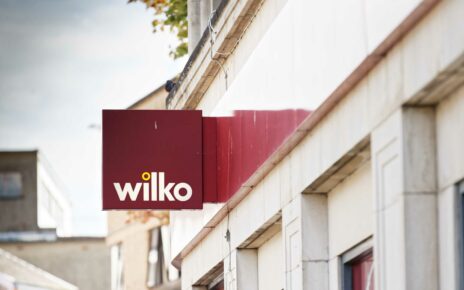The surprising Emojis you SHOULD be using in 2022 (and how to use them) – as the 10 symbols only ‘old people’ use are revealed
- Gen Z sees the thumbs up emoji as rude or passive aggressive, they say
- The emoji is commonly used in casual and professional conversation
- People aged 35 and over are more likely to use the symbol but it is alienating
- Other emojis only used by ‘old people’ include ‘crying laughing’ and the heart
You should be using the blue baseball cap, skull and both of the crying laughing emojis in texts and online, according to new research, published days after ‘old people’ were slammed for using the ‘thumbs up’ in conversation.
Gen Z can’t get enough of the laughing emojis and skull to convey good humour, according to research by Adobe which proves the laughing crying face is popular across the board.
Other cool and emerging emojis which prove you are up to date with online communication include the cowboy and blue cap.

You should be using the blue baseball cap, skull and both of they crying laughing emojis in texts and online, according to new research, published days after ‘old people’ were slammed for using thumbs up in conversation
But Adobe’s research reveals you have to be careful how you use the emojis as their meaning can change depending on the audience.
The intended meaning for the cowboy is ‘exuberance’ according to its creators.
But Gen Z use it to convey ‘pretending to be happy when you are sad’.
‘Seventy per cent of Gen Zs admit to using emojis that go against their intended meaning, as do 60 per cent of Gen Y,’ according to the research.
Boomers are more likely to stick to the traditional meaning with only 20 per cent admitting to sending an emoji to convey a different meaning.
This can be seen with the thumbs up emoji, which is seen as negative and passive aggressive to Gen Z and Millenials and very positive to Boomers.
Boomers on the other hand are more likely to stick to the original meanings – which is why they are still happy to use the thumbs up while people under 30 find it ‘passive aggressive’.
The most popular emoji across the board is the crying laughing face, and the first of three of the trending pictures used to express something being funny.
The next is the rolling laughing face, followed by the skull.
The cap emoji, while rising in popularity, is often misused by older people – its contemporary use is to call people out for lying.

According to a recent poll of 2,000 young people aged 16-29, emojis used by ‘old people’ include the thumbs up, the red love heart, the OK hand and the grimacing face
While the clown is used to convey embarrassment after saying something foolish.
The research was released following the revelation that younger people feel attacked when the thumbs up is used in conversation.
This is reflected in the Adobe study which shows Gen Y and Gen Z rarely use it, despite it being the most popular emoji for boomers.
Whether the chat is informal, between friends or at work, the icon appears to have a very different, ‘rude’ meaning for the younger generation.
A 24-year-old on Reddit summed up the Gen Z argument, saying it is best ‘never used in any situation’ as it is ‘hurtful’.

Business consultant Sue Ellson says it is important to understand the dynamic of your workplace before sending emojis – especially the thumbs up
‘No one my age in the office does it, but the Gen X people always do it. Took me a bit to adjust and get [it] out of my head that it means they’re mad at me,’ he added.
Others agreed it is bad form, especially at work where it can make the team appear unfriendly and unaccommodating.
‘My last workplace had a WhatsApp chat for our team to send info to each other on and most of the people on there just replied with a thumbs up.
‘I don’t know why but it seemed a little bit hostile to me,’ one woman said.
And according to Business Consultant Sue Ellson it could be time to take the younger generation’s lead.
She believes words are always better than symbols in a professional icon and can see how people are disillusioned by the ‘all good’ icon.
‘Predictive systems can type a word like Thanks in two clicks after a while,’ she told FEMAIL.
‘It feels like people are ‘too lazy’ to type a written response and it doesn’t provide clarity as to next steps,’ she said.
‘Do you mean yes I will do something, okay I agree or is it just confirmation that you received the message,’ she added.
The top 10 emojis that make you look ‘old’
1 – Thumbs up – 24%
2 – Red love heart – 22%
3 – OK hand – 20%
4 – Tick – 17%
5 – Poo – 17%
6 – Loudly crying face – 16%
7 – Monkey eye cover – 15%
8 – Clapping hands – 10%
9 – Lipstick kiss mark – 10%
10 – Grimacing face – 9%
And a poll of 2,000 youngsters between 16-29 found the same, with the majority using it agreeing that those who send it are ‘officially old and past it’.
Other emojis used by ‘old people’ that ranked in the top ten include the red love heart, the OK hand and grimacing face.
Poll
Is the thumbs-up emoji in your text vocabulary?
Is the thumbs-up emoji in your text vocabulary?
Now share your opinion
Office workers on Reddit have long been divided over the issue – and it appears age has everything to do with it.
While people in their mid thirties and older are comfortable using the thumbs-up, younger people are not.
‘Why do you feel like it’s unsettling? Honest question… because that’s literally how I respond to 90% of messages… I’m almost 40 though,’ one person said.
And it appeared the older the person behind the keyboard the more likely they were to ‘love’ hitting the thumbs up.
‘I love it because it means many many things. It means ‘I approve’ or ‘I understood and will obey’ or ‘I agree’. If anything, my only objection would be that some days it might be hard to tell which one it means. But it is generally pretty clear,’ one woman said.
Ms Ellson said some people hate the thumbs up because it is seen as an automatic option and ‘could have been pressed by accident’.
Passive-aggressive corporate email jargon decoded
‘Per my last email’ – The information is in previous correspondence. Why did not bother to read it before asking?
‘Hope this helps’ – Never ask me for anything again.
‘Thank you for your feedback, I’ll be sure to keep it in mind’ – Your criticism is incorrect and irrelevant and I’ll never consider it.
‘Just to clarify’ – Do you realise how stupid that sounds?
‘Just circling back’ – Give me an answer to my question right now.
‘As previously discussed’ – I didn’t put it in writing last night because I assumed it was obvious and that you were an adult.
‘While I understand your urgency’ – Just because you didn’t do something when you were supposed to doesn’t make it my problem.
‘I’ll let you two take it from here’ – I’m not part of this conversation and I don’t want to be.
‘Thanks for the input!’ – Do not speak to me ever again.
‘I’ve attached another copy for your convenience’ – Don’t pretend like you didn’t see the first one.
‘Just a few things’ – This is so terrible, where do I even begin?
‘Friendly reminder’ – There is nothing friendly about this message.
‘At your earliest convenience’ – Do it now!
‘Let me know if any questions!’ – I really hope you don’t have any questions.
And she agreed with other people’s fears it could be misconstrued.
Poll
What is your most-hated passive-aggressive corporate email phrase?
What is your most-hated passive-aggressive corporate email phrase?
Now share your opinion
‘It potentially has very different meanings depending on the cultural background of the recipient – approval, happiness, encouragement, number one or go to the surface when diving,’ she said.
She believes the thumbs up should be ‘kept to social media’ or at most, texts,
‘It can be a nice technique for liking a message before responding in text as it indicates that the sender’s message was ‘good’ and this can aid the relationship,” she said.
Ms Ellson said it is important to understand the relationship dynamics at a workplace before deciding to use emojis or not.
This includes whether or not the organisation would be comfortable with staff sending emojis though to clients.
It is also important to ‘check in’ with staff to make sure no one is offended by the chosen emojis, as the meaning of them can change between communities.
Source: Read Full Article

